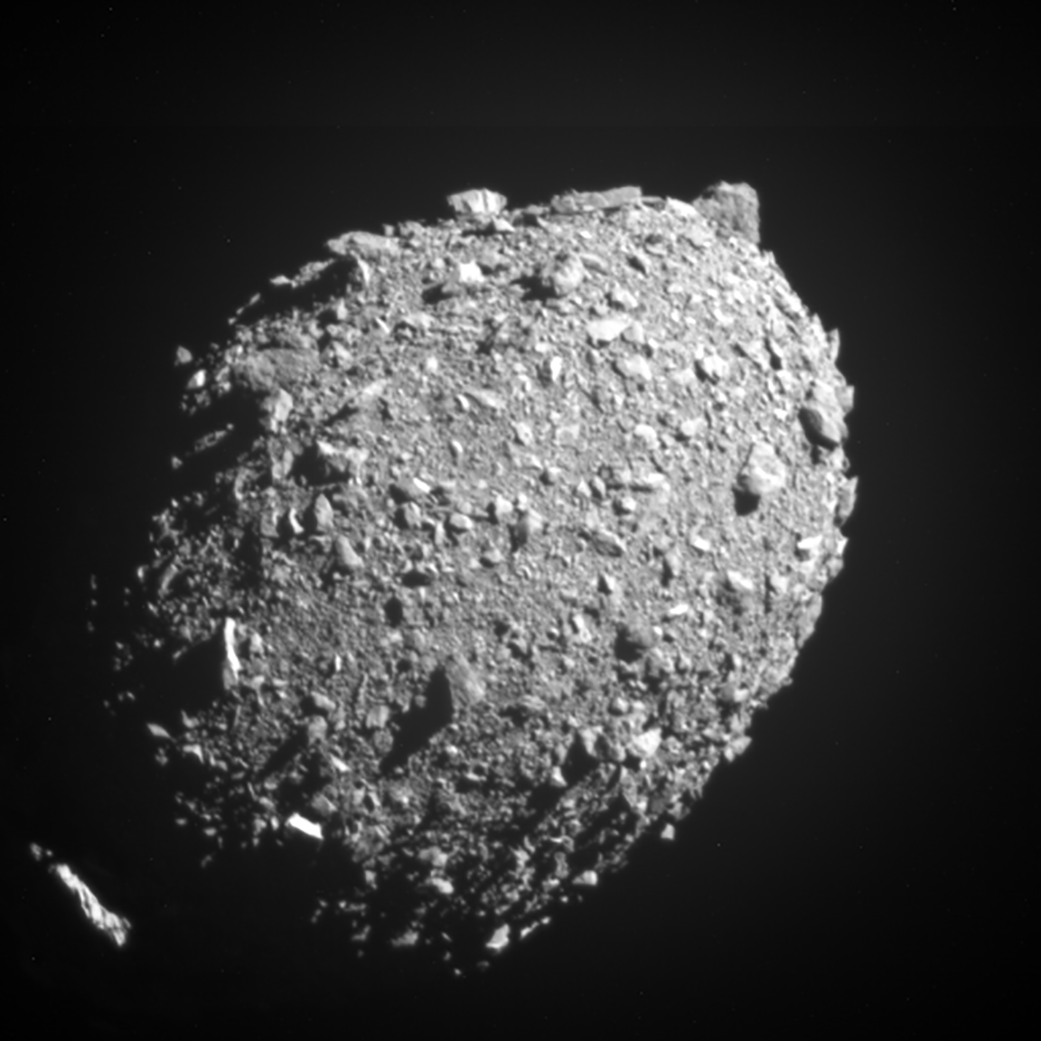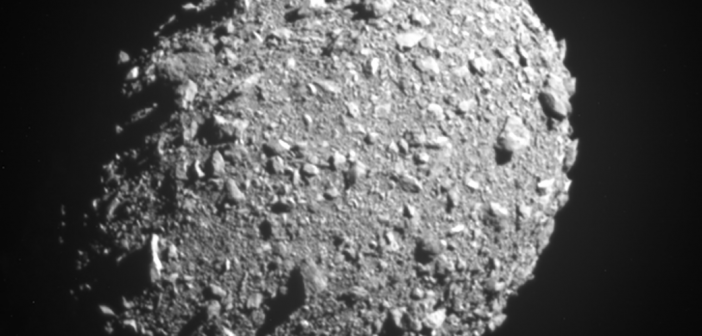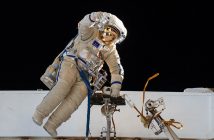
By Staff Writer.
NASA has deliberately crashed a spaceship into an asteroid to alter the asteroid’s orbit. The experiment is an attempt to prove it is possible to shift a future Earth-bound asteroid off course.
At 09:14 (AEST) on Tuesday, September 27, the 590kg refrigerator-sized spaceship called DART (Double Asteroid Redirection Test) smashed into a small asteroid at approximately 22,530 kilometres per hour.
The asteroid, named Dimorphos is around 160 metres in diameter and orbits a larger asteroid called Didymos. NASA says the duo of asteroids are located within 11 million kilometres of Earth but pose no threat, however, they expect the impact to knock Dimorphos off course by 1% (or 10 minutes) and that’s enough to potentially make a difference if it had been on course for Earth.
“At its core, DART represents an unprecedented success for planetary defence,” said NASA Administrator Bill Nelson after the successful impact, noting that a (substantially larger) asteroid that hit Mexico’s Yucatán Peninsula 66 million years ago wiped out the dinosaurs.
Citing the 2005 Deep Impact precedent, Curtin University’s Dr Hadrien Devillepoix didn’t think the mission that was launched using a SpaceX Falcon 9 rocket in November 2021 from California’s Vandenberg Space Force Base, was particularly difficult for NASA to pull off, “still, (it’s) cool that a 170 metres asteroid can be hit bang on!,” he told Australia in Space Magazine.
Dr Devillepoix says one of the main goals of DART is discovering how much of a nudge the impact is going to give. He says that all asteroids have different properties, but the trick is to detect potentially dangerous objects as early as possible, ideally decades ahead of any impact with Earth.
“If done well in advance, even a small impact can make a big difference in the asteroid’s position in the future,” Dr Devillepoix said.
In July, a bus-sized asteroid called 2022 NF came within 90,000 kilometres of Earth at short notice – a relatively near miss given the vast distances in space. NASA has flagged around 25,000 asteroids classed as “near Earth,” although some can still be millions of kilometres away. The asteroids range from a few metres wide to kilometres wide. The Yucatán asteroid was about 10 kilometres in diameter.
After orbiting the Sun as it drew nearer to Dimorphous, DART’s sole instrument, the Didymos Reconnaissance and Asteroid Camera for Optical navigation (DRACO), together with sophisticated guidance, navigation and control systems that worked in tandem with small body manoeuvring autonomous real-time navigation (SMART Nav) algorithms, enabling the spacecraft to successfully zero in on Dimorphos.
Onboard cameras captured close-up images of the asteroid as DART careened towards it. Two weeks prior, an Italian-made CubeSat was deployed from the spacecraft and it photographed the impact and the resulting cloud of ejected matter. Images from the CubeSat and DRACO will help scientists better understand the ability of a kinetic impact on shifting an asteroid.
“DART’s success provides a significant addition to the essential toolbox we must have to protect Earth from a devastating impact by an asteroid,” said Lindley Johnson, NASA’s Planetary Defence Officer. “This demonstrates we are no longer powerless to prevent this type of natural disaster.”
Dr Devillepoix was impressed by the NASA demonstration but suggested the threat of Earth-bound asteroids was solved yet.
“If a civilisation-ending impact was predicted in a few days or weeks, I don’t think there would be much we can do apart from desperately trying to use some desperate uncontrolled options like nukes,” he said. “With a decade’s warning, a lot more options are on the table, with much more controlled and predictable outcomes.”
In four years, the European Space Agency’s Hera Project will survey Dimorphos and Didymos, examining the crater left by the DART impact and making a more precise measurement of Dimorphos’ mass.
Image: The final five-and-a-half minutes of images leading up to the DART spacecraft’s intentional collision with asteroid Dimorphos. The DART spacecraft streamed these images from its DRACO camera back to Earth in real time as it approached the asteroid. This replay movie is 10 times faster than reality, except for the last six images, which are shown at the same rate that the spacecraft returned them. Both Didymos and its moonlet Dimorphos are visible at the start of the movie. At the end, Dimorphos fills the field of view. The final image in the movie shows a patch of Dimorphos that is 51 feet 16 meters) across. DART’s impact occurred during transmission of the final image to Earth, resulting in a partial picture at the end of this movie. Didymos is roughly 2,500 feet (780 meters) in diameter; Dimorphos is about 525 feet (160 meters) in length. Image Credits: NASA/Johns Hopkins APL.





